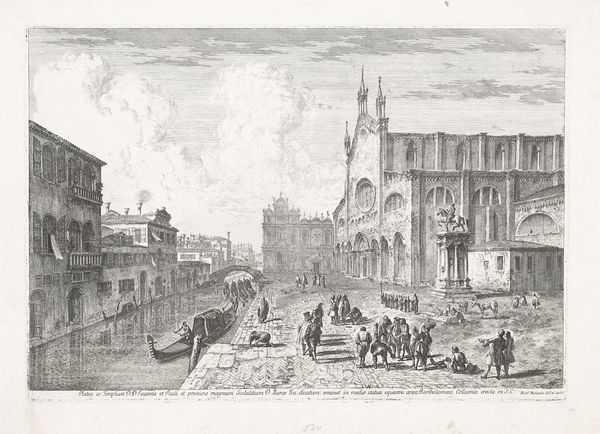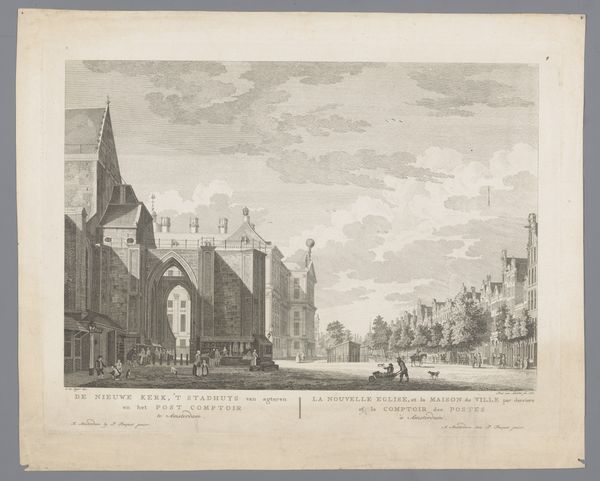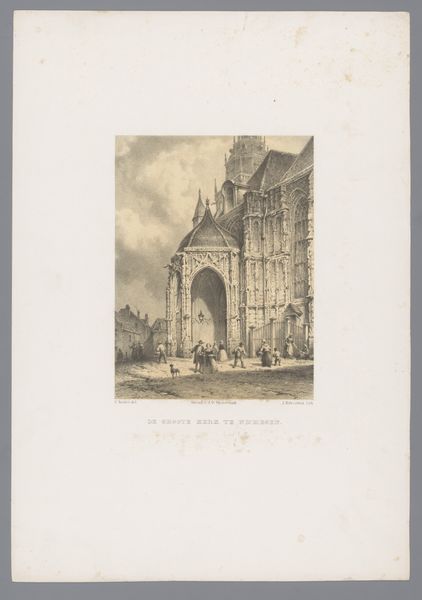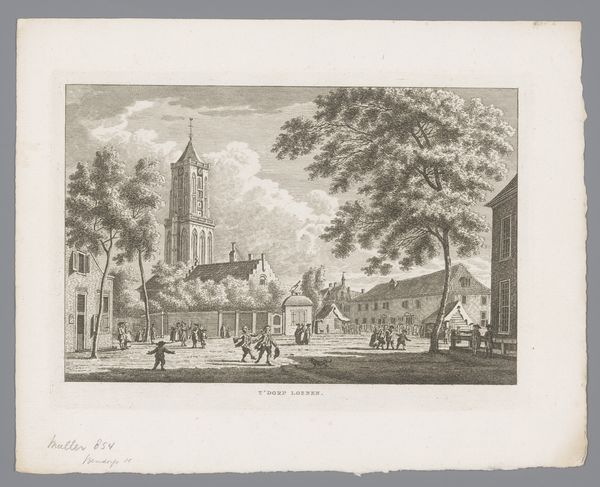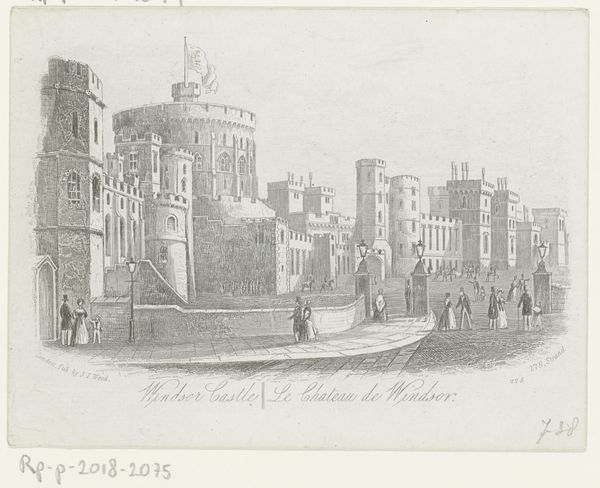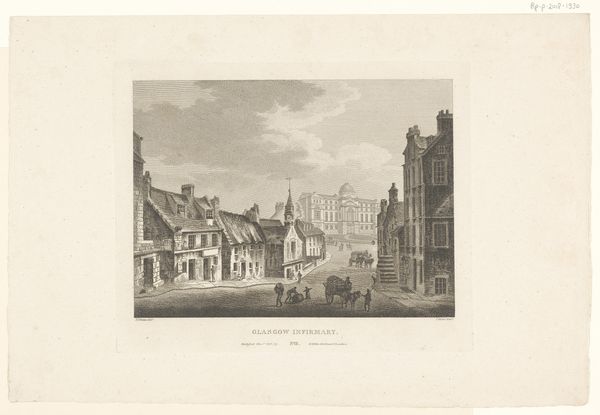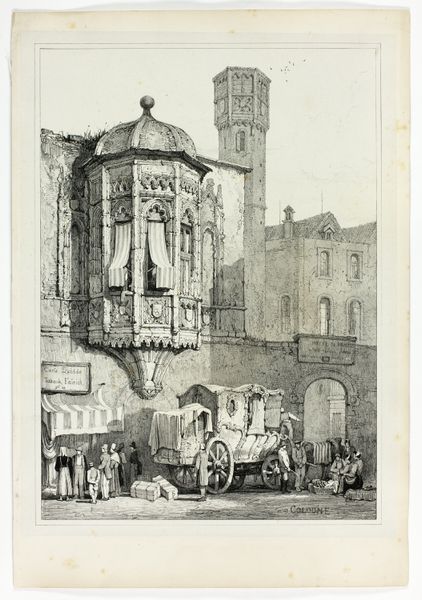
Ruiterstandbeeld van Willem I, prins van Oranje, op het Noordeinde te Den Haag 1845 - 1874
0:00
0:00
print, engraving
# print
#
old engraving style
#
landscape
#
etching
#
cityscape
#
history-painting
#
engraving
#
realism
Dimensions: height 118 mm, width 142 mm
Copyright: Rijks Museum: Open Domain
Curator: Here we have an intriguing 19th-century print by Willem Hendrik Stam, titled "Ruiterstandbeeld van Willem I, prins van Oranje, op het Noordeinde te Den Haag," dating from 1845 to 1874, now held at the Rijksmuseum. Editor: My first impression is that it evokes a very specific time, it seems like it wants to remind everyone of values from the past. The scale and detail emphasize that sort of grand monument aesthetic. Curator: It certainly does, and Stam uses etching and engraving techniques to create this very detailed depiction. Equestrian statues were often deployed by city authorities to claim authority, both from within and outside. Editor: Look at the way William is portrayed on horseback, above the crowd, very deliberately rendered with great attention. He almost takes on the symbolism of leadership and heroism. Even the public figures and guards almost kneel to him as a divine leader. Curator: Precisely, Stam shows Willem of Orange, the founder of the Netherlands, immortalized in bronze. But more than that, consider the broader political statement. This print was created decades after Willem I’s death and well into the reign of Willem III. It served to remind the public of the origins of the Dutch state at a time when national identity was still being actively constructed and perhaps contested. Editor: Absolutely, there is also the backdrop itself, almost castle-like. It suggests a deeply-rooted connection between the royalty, their buildings and, power as being established over a great deal of time. Curator: And let's not overlook the seemingly ordinary figures populating the square. Their inclusion is just as strategic. They, with their little dogs, represent a prosperous, orderly society, content under the watchful gaze of their founder, the ‘Father of the Fatherland’ you might say. Editor: It makes me think about our own visual symbols in politics today and whether they can be considered manipulative or truthful accounts. The power an image holds continues to impress. Curator: I agree. Through the artwork we glimpse the carefully cultivated image of a nation’s heritage and, perhaps, the beginning of calculated national marketing and public image.
Comments
No comments
Be the first to comment and join the conversation on the ultimate creative platform.

